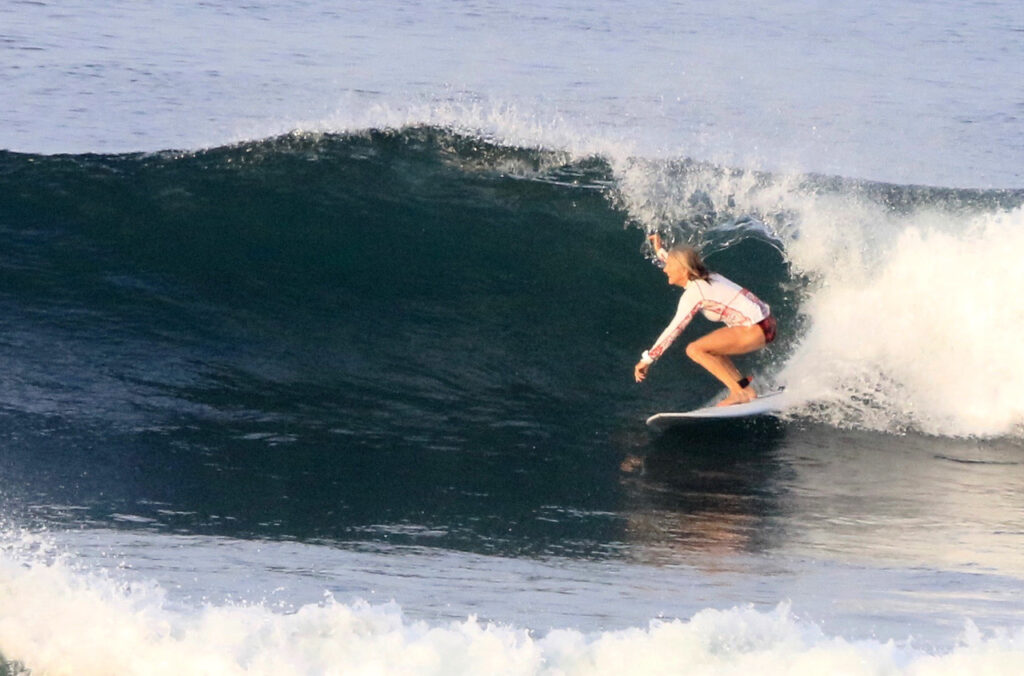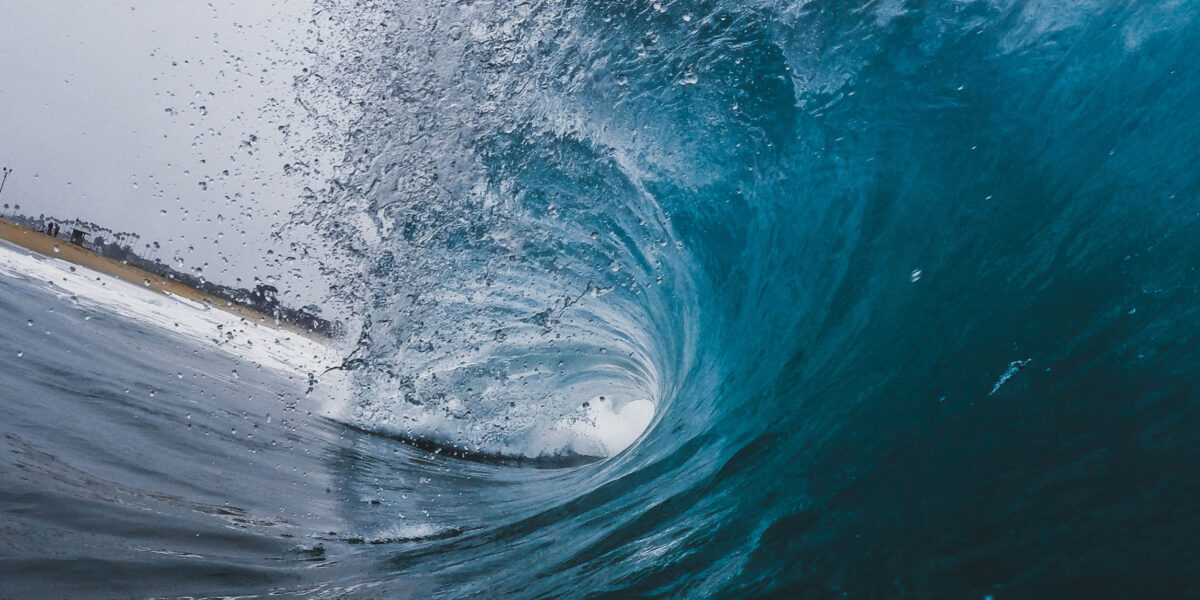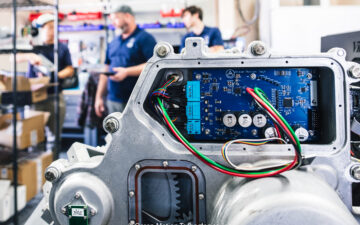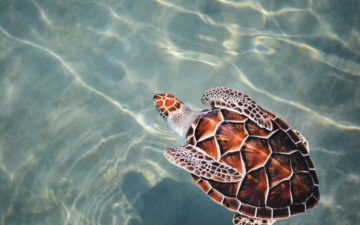The following is a guest blog written by Catharine Cooper, TOF Board of Advisor Member. To read Catharine’s full bio, visit our Board of Advisor’s page.
Winter surf.
Dawn Patrol.
Air temp – 48°. Sea temp – 56°.
I wriggle quickly into my wetsuit, cold air saps the warmth from my body. I pull on booties, lower the wetsuit bottoms over my now neoprene covered feet, add wax to my longboard, and sit to analyze the swell. How and where the peak has shifted. The time between the sets. The paddle out zone. The currents, the riptides, the direction of the wind. This morning, it’s a winter westerly.
Surfers pay close attention to the sea. It’s their home away from land, and often feels more grounding than other terrain. There’s the Zen of being connected to a wave, a liquid energy driven by winds, that has traveled hundreds of miles to reach the shore. The cresting bump, the shimmering face, the pulse that hits a reef or a shallow and surges upward and forward as a crashing force of nature.
Looking more now like a seal than a human, I carefully make my way over the rocky entrance to my home break, San Onofre. A handful of surfers has beaten me to the point, where the waves break both left and right. I ease my way into the cold water, letting the chill slide down my back as I immerse myself into the salty liquid. It’s a pungent taste on my tongue as I lick droplets off my lips. It tastes like home. I roll onto my board and paddle toward the break, while behind me, the sky gathers itself in pink bands as the sun slowly peeks over the Santa Margarita Mountains.
The water is crystal clear and I can see the rocks and kelp beds below me. A few fish. None of the sharks that lurk in this their rookery. I try to ignore the looming reactors of the San Onofre Nuclear Power Plant that lord over the sandy beach. The two ‘nipples,’ as they are affectionally called, now shuttered and in the process of being decommissioned, stand as a stark reminder of the inherent dangers of this surf spot.

A few months ago, an emergency warning horn blasted continuously for 15 minutes, with no public message to alleviate the fears of those of us in the water. Ultimately, we decided, what the heck? If this was a meltdown or radioactive accident, we were already goners, so why not just enjoy the morning’s waves. Eventually we got the “test” message, but we had already resigned ourselves to fate.
We know that the ocean is in trouble. It’s hard to turn a page without another photo of garbage, plastic, or the latest oil spill inundating shorelines and entire islands. Our hunger for power, both nuclear and that which comes from fossil fuels, has moved past a point where we can ignore the damage we are causing. “Tipping point.” Hard to swallow those words as we teeter on the edge of change with no chance of recovery.
It’s us. We humans. Without our presence, the ocean would continue to function as it did for millenniums. Sea life would propagate. Sea floors would rise and fall. The natural chain of food sources would continue to support itself. Kelp and corals would flourish.
The ocean has cared for us – yes, cared for us – through our continued blind consumption of resources and subsequent side effects. While we have madly been burning through fossil fuels, increasing the volume of carbon in our fragile and unique atmosphere, the ocean has quietly been absorbing as much excess as possible. The result? A nasty little side effect called Ocean Acidification (OA).
This reduction in the water’s pH occurs when carbon dioxide, absorbed from the air, mixes with ocean water. It changes the chemistry and decreases the abundance of carbon ions, making it more difficult for calcifying organisms such as oysters, clams, sea urchins, shallow water corals, deep sea corals, and calcareous plankton to build and maintain shells. Certain fish’s ability to detect predators is also decreased in increased acidity, putting the entire food web at risk.
A recent study found that the waters off California are acidifying twice as fast as elsewhere on the planet, threatening critical fisheries along our coast. The ocean currents here tend to recirculate colder, more acidic water from deeper in the ocean to the surface, a process known as upwelling. As a result, California’s waters were already more acidic than many other areas of the ocean before the spike in OA. Looking down at the kelp and tiny fish, I can’t see the changes in the water, but research continues to prove that what I cannot see is wreaking havoc with sea life.
This week, NOAA released a report revealing that OA is now measurably affecting the shells and sensory organs of Dungeness Crab. This prized crustacean is one of the most valuable fisheries on the West Coast, and its demise would create financial chaos within the industry. Already, the oyster farms in the state of Washington, have had to adjust the seeding of their beds to avoid high concentrations of CO2.
OA, mixed with the rising ocean temperature due to climate change, raises real questions of how marine life will fare over the long term. Many economies are dependent on fish and shellfish, and there are people worldwide who rely on food from the ocean as a primary protein source.
I wish I could ignore the facts, and pretend that this beautiful sea in which I’m sitting is 100% okay, but I know that it’s not the truth. I know that we must collectively gather our resources and strength to slow down the degradation that we have spun into play. It’s up to us to change our habits. It’s up to us to demand that our representatives and our government face the threats, and take steps on a grand scale to lower our carbon emissions and stop destroying the eco-system that supports us all.
I paddle to catch a wave, stand up, and angle across the breaking face. It is so beautiful that my heart does a little flip-flop. The surface is clear, crisp, clean. I can’t see OA, but I can’t ignore it either. None of us can afford to pretend it’s not happening. There is no other ocean.







